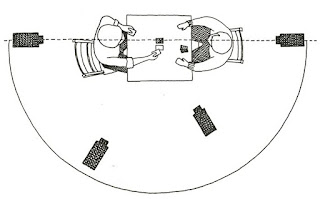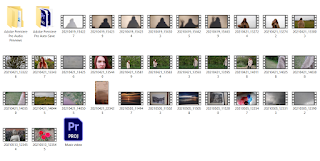Continuity editing
180 degree rule
The 180 degree rule is a guideline that represents the relationship between two characters on screen by keeping the camera to one side and moving between the two subjects. The usage of the 180 degree rule is that you keep both characters in scene and can see clearly what is happening with those characters, there is never a doubt in the 180 degree rule that 1 of those characters is missing
30 degree rule
A film guideline that states that the camera should move at least 30degrees relative to the subject to keep continuity. Again similar to the 180 degree rule the characters are almost trapped by the camera due to it's minimal movement which allows it to be clear for the viewer the characters aren't vanishing off screen.
shot reverse shot
establishing shot
Establishing are wide shots that show the scene to the viewer, created using wide angle lenses to show as much as possible and is typically the first scene shown although that is not always the case. The Establishing shot creates continuity through it's use of a wide angle allowing the viewer to see more of the scene.
cut in
Used to show the reactions of a character in a film when there is something happening and the character needs their reaction shown.
temporal overlap
temporal overlap is the act of repeating the same scene multiple times from different angles for added effect. If not done well this effect can look slightly cheap and commonly breaks continuity in the film due to the repeated time.
Kuleshov effect
Einstein's methods of montage
Rhythmic montage
Rhythmic montage refers to the continuity based shots taken using matching action. Rhythmic montage became common place due to the usage by soviet directors in their films. The Rhythmic montage can be used to make a scene dramatic or exciting, when it is used well it can make the scene look like a music video.
Tonal montage
Tonal montages are often slower than other forms of montages and have a series of clips that link heavily to emotion. In both examples it links to the death of a main character.
Intellectual montage
The scenes often relate to a metaphor, for example the ending scene in apocalypse now. The killing of the cow links to the death of one of the main characters and occurs at the same time in the film.
Over tonal Montage
The most common form of a montage scene in film where the action is fast and has a clear tone to it. These can be used in almost any way from action scenes to horror scenes.



Comments
Post a Comment